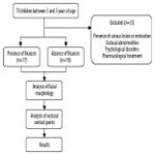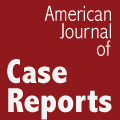Evaluation of facial morphology and occlusal contacts in children with and without bruxism
Carolina Carvalho Bortoletto, Regiane Albertini Carvalho, Leandro Lauriti, Priscilla Rodrigues da Silva, Raquel Agnelli Mesquita-Ferrari, Kristianne Porta Santos Fernandes, Luis Vicente Franco de Oliveira, Lara Jansiski Motta, Sandra Kalil Bussadori
Med Sci Tech 2013; 54:120-124
DOI: 10.12659/MST.889359
Available online: 2013-07-29
Published: 2013-07-29

Background:
Parafunctional habits, such as bruxism, nail biting and non-nutritive sucking habits, are common among children and can adversely affect the stomatognathic system. The persistence of such habits can have a profound effect on orofacial structures. The purpose of the present study was to evaluate and compare facial morphology and the number of occlusal contacts in children aged three to five years with and without bruxism.
Material and Methods:
The children were divided into two groups based on the presence or absence of bruxism. Standardised photographs were taken for the analysis of facial morphology. AccuFilm® II carbon paper was used for the record of occlusal contact points. Statistical analyses were performed adopting a 5% level of significance.
Results:
The group with bruxism had an average of 4.31 more occlusal contact points in comparison to the group without bruxism; this difference was statistically significant (p<0.005). In the analysis of facial morphology, facial height in the group of children with bruxism was 20% smaller in comparison to the group without bruxism (p<0.002).
Conclusions:
Based on the present findings, children with bruxism have a smaller facial height and a greater number of occlusal contact points in comparison to those without bruxism.
Keywords: occlusal contacts, bruxism, Child, facial morphology



